|
A Stairstep Story: Remembering Clarence Burke, Jr. |
 |
 |
 |
|
Written by Administrator
|
|
Thursday, 20 June 2013 17:59 |
A Stairstep Story:
Remembering Clarence Burke, Jr.
(The Invisible Man)
Clarence Newton Burke Jr. (25th May 1949 -
26th May 2013) of the family act The
Five Stairsteps, known as the First
Family of Soul was the brain child, the main songwriter, choreographer,
musician, guitarist, and lead singer. The group consisted of four brothers and
one sister, with Clarence Jr, Alohe
Jean, James, Dennis, Kenneth "Keni", and Cubie. 
The group first began performing after Mrs. Betty Burke organized her children
for a talent fundraising show in benefit for the school library. They won first
prize which led to other local talent shows with the Five Stairsteps winning first prize for every show. The group
apparently also won first prize during amateur night at the Regal Theater just
prior to their recording duet. Mr.
Clarence Burke Sr. had known Fred
Cash of the Impressions and he
convinced Fred to come to their house where his kids auditioned for him. Fred
was convinced that the children had talent and were marketable and set up a
telephone audition for Curtis Mayfield.
The result was a recording contact with Mayfield’s new record company called
Windy C Records. In 1966 they released Don't
Waste Your Time / You Waited Too Long which reached No. 16 on the Billboard
R&B chart in 1966. This was followed by World
of Fantasy / Playgirl's Love then the Come
Back / You Don't Love Me. An LP quickly followed up in 1967 on Windy C
produced by Curtis Mayfield. All of the songs on the album were written by Curtis Mayfield, Clarence Burke Jr,
Clarence Burke Sr. and Gregory Fowler.
Stage presence was taught to Clarence Jr. by Clarence Sr. in the beginning. In
1967 the group now billed as the Five
Stairsteps & Cubie released Something's
Missing which went up to No. 17 on the billboard charts. Windy C released a
total of seven singles between 1966 and 1967 with heavy marketing for the Five Stairsteps. The singles Ain't Gonna Rest (Till I Get You), You Can't
See, and Change Of Pace were not
included on the freshmen album. In 1967 the album Jimmy Bishop On Stage Live At The Nixon Theater was released featuring Billy Stewart, The Delfonics, the Ambassadors, The Intruders and The Five Stairsteps and Cubie. The Stairsteps were recorded live performing Somethings Missing and Don't Waist Your Time plus dialogue.
This was followed-up by an album in 1968 on Buddah
Records produced by a 17 year old Clarence
Burke Jr. assisted by the jazz great Johnny
Pate called Our Family Portrait.
The LP featured each one of the Five
Stairsteps & Cubie including Mamma and Papa Stairstep. Lead singer
Clarence Jr. shared the spotlight with Kenneth who sang lead on A Million To One, James III who sang
lead on You Make Me So Mad, Alohe Jean
who sang lead on The Look of Love,
Cubie who sang lead on The New Dance
Craze and Mama and Papa Stairstep who sang lead on Windows of the World/I Remember You. Our Family Portrait was a total family affair. Buddah would release
three singles between 1967 and 1968 with The
Shadow of Your Love being the last, which was not included on the album.
Finally the record company released a variety album in 1968 featuring the Five Stairsteps & Cubie called Classmates highlighting similar acts
like Judy White, Henry Lumpkin, Tony
Lamarr, and Timothy Wilson.
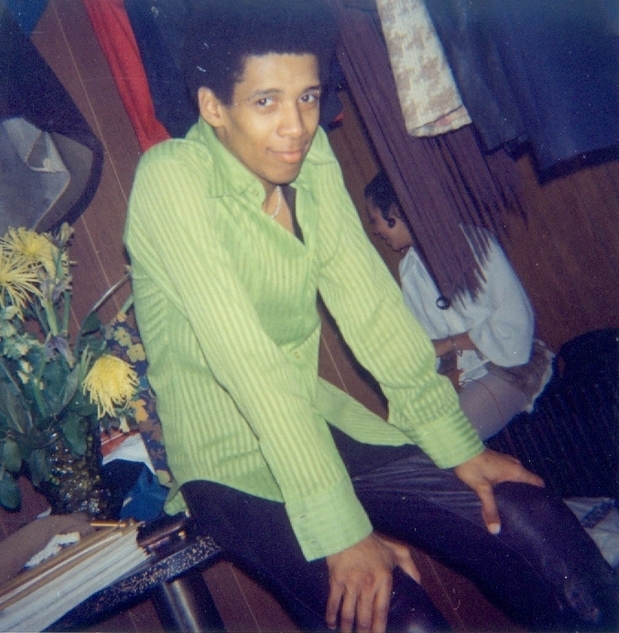 The following year saw a different direction for the
Five Stairsteps & Cubie with an
album release on Curtom Records again produced by Curtis Mayfield. Their first release was Don’t Change Your Love which became a signature song for the group.
Curtom released two 45 singles in 1968 titled Don't Change Your Love / New Dance Craze and Stay Close To Me / I Made A Mistake. A full album followed in 1969
called Loves Happening. Several of
the selections were covers of the
Impressions compositions like Loves
Happening, Madam Mary, Stay Close To Me, and Little Young Lover. The
Five Stairsteps and The Impressions
had a bond. Curtis Mayfield referred
to the Burke children as his babies. The Loves
Happening album was written mostly by Curtis
Mayfield and it did not include any Clarence
Burke Jr. Compositions. The 1969 year was also a milestone for the Five Stairsteps, as they were featured
in a concert and film called “It’s Your Thing”.
This was an Isley Brothers concert
movie recorded live at Yankee Stadium. Clarence Jr. and the Five Stairsteps performed on the show
backed up by the Midnight Movers
Unlimited. Other acts were Judy
White, the Sweet Cherries, the Brooklyn Bridge, Patti Austin, the Young Gents,
Ike & Tine Turner, the Winstons, Moms Mabley, the Carla Ward Singers, and
others. The Five Stairsteps became a The following year saw a different direction for the
Five Stairsteps & Cubie with an
album release on Curtom Records again produced by Curtis Mayfield. Their first release was Don’t Change Your Love which became a signature song for the group.
Curtom released two 45 singles in 1968 titled Don't Change Your Love / New Dance Craze and Stay Close To Me / I Made A Mistake. A full album followed in 1969
called Loves Happening. Several of
the selections were covers of the
Impressions compositions like Loves
Happening, Madam Mary, Stay Close To Me, and Little Young Lover. The
Five Stairsteps and The Impressions
had a bond. Curtis Mayfield referred
to the Burke children as his babies. The Loves
Happening album was written mostly by Curtis
Mayfield and it did not include any Clarence
Burke Jr. Compositions. The 1969 year was also a milestone for the Five Stairsteps, as they were featured
in a concert and film called “It’s Your Thing”.
This was an Isley Brothers concert
movie recorded live at Yankee Stadium. Clarence Jr. and the Five Stairsteps performed on the show
backed up by the Midnight Movers
Unlimited. Other acts were Judy
White, the Sweet Cherries, the Brooklyn Bridge, Patti Austin, the Young Gents,
Ike & Tine Turner, the Winstons, Moms Mabley, the Carla Ward Singers, and
others. The Five Stairsteps became a
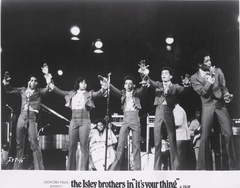 major force in the world of R&B. The final Curtom release in 1969 was We Must Be In Love that included duets
from Clarence Jr, and Kenneth Burke. Two of the Curtom singles featured Kenneth
Burke on lead vocals instead of Clarence which were Stay Close To Me and Baby
Make Me Feel So Good. The last Curtom single Madame Mary was not included on the album which featured the lead
vocals of Clarence Jr. major force in the world of R&B. The final Curtom release in 1969 was We Must Be In Love that included duets
from Clarence Jr, and Kenneth Burke. Two of the Curtom singles featured Kenneth
Burke on lead vocals instead of Clarence which were Stay Close To Me and Baby
Make Me Feel So Good. The last Curtom single Madame Mary was not included on the album which featured the lead
vocals of Clarence Jr.
The year 1970 would be a milestone for the Five Stairsteps after the release of "O-o-h Child" written by Stan
Vincent. This signature song reached number eight on the Billboard Hot 100
chart, while peaking at number fourteen on the R&B charts. The flip-side of Ooh Child was Dear Prudence which was also played on popular radio. Buddah
Records would then release Who Do You
Belong To and Because I Love You
on several 45 releases. The self-titled album called Stairsteps was a combination of songs written by Clarence Burke Jr, Stan Vincent, John
Lennon and Paul McCartney. It
featured Clarence Burke on guitar, Kenneth Burke on bass and Bernard Purdy on drums. The album is a
masterpiece and the year 1970 through 1971 was a metamorphosis for the Five
Stairsteps. The Clarence Burke Jr.
composition Vice The Lights was a
total funk and psychedelic delivery and is a Stairsteps classic. The group would open up their stage show in 1970 with
Because I Love You
which was a psychedelic soul ballad composed by Clarence Burke, Jr.

America
Standing was released in 1970 by the Five Stairsteps which was a hard rock record. This was a cover of
the Steppenwolf classic Monster. That year the group
incorporated a funk and black rock psychedelic sound into their stage act. They
would open up their show with a cover of Jimi
Hendrix Purple Haze and Music Lover from Sly & the Family Stone. Their own composition Don't Change Your Love became a psychedelic production blended with slick
choreography. Drummer Jerome Brailey
from Richmond Virginia joined the act in 1970. His photo
was included on the 1971 The Stairsteps
album cover with the group. He would leave the group to join the Chambers Brothers and then eventually Parliament-Funkadelic. The 1971
The Stairsteps album was also produced by Stan
Vincent containing compositions from Clarence
Burke Jr, Stan Vincent and George
Harrison. The lead vocals on the album were performed by Clarence, Alohe and
Kenneth. Buddah Records would release Didn't
It Look So Easy, I Love You – Stop, and Hush
Child between 1971 and 1972. During
this time Alohe Jean (Rami) Burke
retired from the group and served her country in the United States military. Upon completing
her service she enrolled in college and furthered her education completing her
bachelors and masters degrees in the sciences. A final Buddah single was
released in 1972 that would not be included on an album called Every Single Way / Two Weeks Notice,
returning back to a sweeter softer soulful sound much like that of 1967.
Clarence
Jr.
would not appear again in recorded music until 1976 with the invitation of Billy Preston to appear on the Quincy Jones album called I Heard That!!. He and his brother Kenneth
"Keni" recorded the chorus on the recording Superstition as the Stairsteps. They were joined by Stevie Wonder, Bill Withers, Billy Preston
and the Brothers Johnson on the
tune. That was also the year of the Stairsteps
reunion resulting in the album 2nd
Resurrection produced by Billy
Preston and the Burke brothers. The lead vocals and instrumental solos were
performed by the Burke brothers of Clarence Jr, James, Kenneth and Dennis. The songwriting was done by the Burke
brothers as well and Dark Horse Records owned by George Harrison released the album. It has become a masterpiece.
The following year Kenneth Burke
released his debut solo album Keni Burke
also on Dark Horse. Clarence Jr. would appear again in 1978 as a guitarist on
the Herbie Mann Super Mann album. The following year in 1979 he appeared again as a
guitarist on the debut album for the R&B act Touch Of Class. Clarence one told me that the group Touch of Class substituted for his
brothers as the Stairsteps shortly before the group finally retired. That year
also Venus
Dodson who had been a singer with Leroy Burgess (Black Ivory)
and Patrick Adams released her solo
album Night Rider, and Clarence Jr.
appeared on it as a background vocalist.
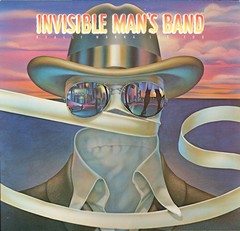 The year 1979 also became a milestone for Clarence Burke Jr. with his second
reunion of his brothers under the project named The Invisible Man's Band. The first single All Night Thing written
by Clarence Burke became a club hit
and was played heavily on FM radio. The first album The Invisible Man's Band was released in 1980 featuring Clarence Burke Jr, James Burke, Kenneth
(Keni) Burke and Dennis Burke.
The follow-up album Really Wanna See You
was released in 1981. The last release by The
Invisible Man's Band was a 1982 12 inch single called Sunday Afternoon, which
was the only completed recording
from an unfinished album. The Invisible
Man's Band would never tour. The year 1979 also became a milestone for Clarence Burke Jr. with his second
reunion of his brothers under the project named The Invisible Man's Band. The first single All Night Thing written
by Clarence Burke became a club hit
and was played heavily on FM radio. The first album The Invisible Man's Band was released in 1980 featuring Clarence Burke Jr, James Burke, Kenneth
(Keni) Burke and Dennis Burke.
The follow-up album Really Wanna See You
was released in 1981. The last release by The
Invisible Man's Band was a 1982 12 inch single called Sunday Afternoon, which
was the only completed recording
from an unfinished album. The Invisible
Man's Band would never tour.
In 2001 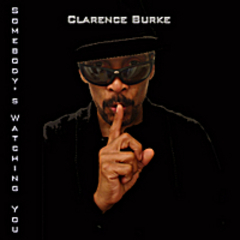 he appeared in the chorus of the US progressive
metal band Dream Theater’s on its
recording called Metropolis Pt. 2:
Scenes From A Memory. Lately, the fans of Clarence Burke Jr. have enjoyed seeing him perform as a solo artist
and with others acts. His performance at Ashford & Simpson’s Sugar Bar in
NYC was well received with him performing his own compositions as well as Sly Stone and Curtis Mayfield. The last release by Clarence Burke Jr. was a digital download of a live recording of “Somebody’s Watching You”. He would appear on The Funk Show twice and
we were planning for a third interview. Clarence
N. Burke Jr. was the invisible man and will be missed by all for a long
time to come. he appeared in the chorus of the US progressive
metal band Dream Theater’s on its
recording called Metropolis Pt. 2:
Scenes From A Memory. Lately, the fans of Clarence Burke Jr. have enjoyed seeing him perform as a solo artist
and with others acts. His performance at Ashford & Simpson’s Sugar Bar in
NYC was well received with him performing his own compositions as well as Sly Stone and Curtis Mayfield. The last release by Clarence Burke Jr. was a digital download of a live recording of “Somebody’s Watching You”. He would appear on The Funk Show twice and
we were planning for a third interview. Clarence
N. Burke Jr. was the invisible man and will be missed by all for a long
time to come.
|
|
Last Updated on Tuesday, 24 February 2015 09:21 |
|
|
Two Silent Microphones from the Fraternity of Soul! |
 |
 |
 |
|
Written by Administrator
|
|
Saturday, 23 March 2013 18:34 |
|
Two Silent Microphones from the
Fraternity of Soul!
(Remembering Richard Street and Damon
Harris of the Temptations)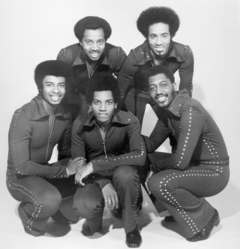
Most people who
follow Soul music from the 1960’s know about the legacy of the Temptations. The group’s lineage dates
back to 1960 in Detroit, Michigan with teenager Otis Williams who formed a group in the 1950’s called the Distants. The group had gone through a
variety of name changes and its lead singer was Richard Street. After a breakup of the group, the remnants merged
with the remnants of a rival group called the Primes. The new members were Eddie
Kendricks and Paul Williams
joining Otis Williams and bass
vocalist Melvin Franklin now calling
themselves the Elgins. The group was
signed to Motown who changed its name to the Temptations. Lead vocals in the beginning were by Eddie Kendricks and Paul Williams. Because of a lack of
hits in the early years the company brought in a new lead singer named David Ruffin. In 1968 Ruffin was
replaced by Dennis Edwards as the
new lead singer. In 1970 Richard Street
the former lead singer of a Motown act called the Monitors was hired to 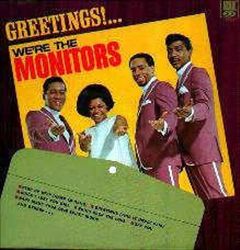 stand in for Paul Williams
from time to time. Williams was often ill and was officially replaced in 1971. Kendricks
left the group in 1971, because of a business disagreement and he was replaced
with a 21 year old tenor vocalist from Baltimore named Damon Harris. Harris led a group called the Young Tempts that sang Temptations songs. Their name was soon
changed by the Isley Brothers to the Young Vandals, who signed them to
their label T-Neck. The new lineup for the Temptations in 1971 was Damon Harris, Richard Street, Otis
Williams, Melvin Franklin, and Dennis
Edwards. The group would now have a new look and a new sound. stand in for Paul Williams
from time to time. Williams was often ill and was officially replaced in 1971. Kendricks
left the group in 1971, because of a business disagreement and he was replaced
with a 21 year old tenor vocalist from Baltimore named Damon Harris. Harris led a group called the Young Tempts that sang Temptations songs. Their name was soon
changed by the Isley Brothers to the Young Vandals, who signed them to
their label T-Neck. The new lineup for the Temptations in 1971 was Damon Harris, Richard Street, Otis
Williams, Melvin Franklin, and Dennis
Edwards. The group would now have a new look and a new sound.
The Temptations entered into a new era
with this lineup scoring a #1 hit on the US Top 10 chart in 1972 called "Papa Was a Rollin' Stone". That was
followed by "Masterpiece"
in 1973 that reached #1 on the R&B No. 1 chart. They kept the #1 position
on that chart the same year with "Let
Your Hair Down". In 1974 the release
"Happy People" and in 1975 "Shakey Ground" both reached #1 on
the R&B No. 1 chart.
Richard Street who contributed to many of the Temptations hits during his tenure with
the group left in 1993 because of business disagreements. Damon Harris left the group in 1975 and got back together with the
former members of the Young Vandals renaming
the group Impact. The group would release
their first album on 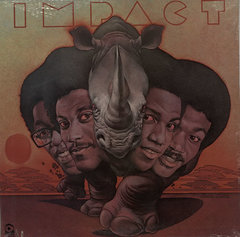 Atco in 1976 backed up by the MFSB orchestra. A second album was released on Fantasy in 1977 and
in 1978 Harris released his only solo album called “Silk”. In 1997 Damon Harris
was diagnosed with prostate cancer and founded the Damon Harris Cancer
Foundation in 2001. He died of prostate cancer on February 18, 2013 at the age of
62. Nine days later Richard Street
died from pulmonary embolism on February 27, 2013 in Las Vegas, Nevada. By
coincidence Bobby Rogers a founding
member of Smokey Robinson & the
Miracles and a Motown alumnus passed away on March 3, 2013. Atco in 1976 backed up by the MFSB orchestra. A second album was released on Fantasy in 1977 and
in 1978 Harris released his only solo album called “Silk”. In 1997 Damon Harris
was diagnosed with prostate cancer and founded the Damon Harris Cancer
Foundation in 2001. He died of prostate cancer on February 18, 2013 at the age of
62. Nine days later Richard Street
died from pulmonary embolism on February 27, 2013 in Las Vegas, Nevada. By
coincidence Bobby Rogers a founding
member of Smokey Robinson & the
Miracles and a Motown alumnus passed away on March 3, 2013.
Some of the Temptations classics featuring a prominent
role for Richard Street were "Superstar
(Remember How You Got Where You Are)", "Papa Was a Rollin'
Stone" "Masterpiece”, "Hey Girl (I Like Your Style)" and
"Heavenly”. Damon Harris contributed heavily to "Superstar (Remember How You Got Where You Are)" "Take a Look Around", "Papa
Was a Rollin' Stone”, "Masterpiece", "Plastic Man" and "Love Woke Me Up This Morning".
The two of them would sing together on most of these recordings.
The Temptations are the one and only Fraternity of Soul.
Damon Harris and Richard Street have joined the long
list of martyrs from the Temptations membership. 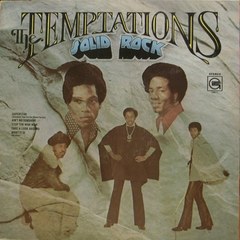 Their microphones have been silenced,
but their legacy lives on. Their microphones have been silenced,
but their legacy lives on.
Damon Harris was a guest of Howard Burchette on The
Funk Show in August of 2007. He shared his history with the Temptations, the group Impact and his work in prostate cancer
awareness.
Howard
Burchette
|
|
Last Updated on Monday, 25 March 2013 12:38 |
|
Black Byrd: The Story of Dr. Donald Byrd |
 |
 |
 |
|
Written by Administrator
|
|
Wednesday, 13 February 2013 22:15 |
It was literally impossible for any HBCU (Historically
black colleges and universities) college student of the mid and late 1970's not
to know who Donald Byrd was. Our
musical diet consisted of the usual Funk stuff of the day, but also the
Jazz turned Soul-Jazz and Funk artists like
Herbie Hancock, Quincy Jones, the Crusaders,
George Benson, Roy
Ayers, Harvey Mason, Ramsey Lewis and Donald
Byrd. He was popular amongst college students. Perhaps it came from
the fact that he spent so much time as a professor in various universities
around the country and he knew the likes and dislikes of a young college
student especially of the HBCU. Also, the connection might have come from the
fact that he had created three to four groups mainly made up of his former
students from HBCU’s namely The
Blackbyrds. We loved Donald Byrd
and he identified with us. Donald Byrd also represented something
to a lot of us. He became a bridge between the popular music of the day
(R&B, The Funk and Disco) and Jazz. I first saw Donald Byrd perform in 1975 when I was freshman at St. Augustine’s College. He was one of the
headliners of a Jazz series located at NC State University that year. The
opening act was the Blackbyrds, who
also were the rhythm section behind Dr. Byrd.
This had been one of my first live Jazz concert experiences. The other
acts in the series were Dizzy Gillespie,
Dave Brubeck, and Herbie Mann
and I saw all of them. This had become a
part of my foundation of Jazz appreciation. Jazz had been around me all of my
life, but this experience had opened the door much wider to it. 
I remember in the winter of
1977 a college friend and myself were sitting in RDU airport waiting for our
gates to open. It was a long wait and I remember we were just sitting watching
people and just discussing what ever world events were happening at that time.
You could not help but notice the tall beautiful woman who was dressed in a fur
hat, a long fur coat, boots and expensive looking jewelry walking back and
forth between the seat where she and her husband were sitting and the airline check-in counter. I remember Jeff and I agreeing that we could
not afford a woman like that. We continued sitting and talking and I noticed
that the woman’s husband kept looking in my direction. As a matter of fact
every time I turned my head he was staring at us. I then said “Jeff, I don’t
know if you noticed, but that guy over there keeps staring at us”. He said
“Man, I noticed that too and it’s ticking me off! Let’s go say something to
him!” Well we started walking over towards the man and I remember thinking what
am I going to say to him when I get in front of him. He had his cap pulled down
over his eyes. After I got maybe six feet away from him, I said to Jeff “Hey,
that’s Donald Byrd!” He said “Yes! You’re right that is Donald Byrd!” By that time Dr. Byrd saw that we had
recognized him and he had a big smile on his face. Both of us in turn also had
big grins on our faces as well. He knew that we were college students and he
just wanted to have someone to talk to.
He invited us to sit down with them and he asked us where we went to
school. He began to tell us about his Jazz career and Blue Note Records. He
talked about Howard
University and The
Blackbyrds. He talked some about North
Carolina Central University and asked us if we had heard
the new music from N.C.C.U. That was his new group from North Carolina Central
University. I immediately
responded “absolutely!” Soon it was time for he and his wife to leave and he
said “I only have one of these, but here is a cassette of some of my
music”. After they left we both looked
at each other and said “Man that was Donald Byrd!”
Dr. Donald Byrd was born Donaldson
Toussaint L'Ouverture Byrd II in Detroit
in 1932. He played in a military band in the Air Force and then joined Art Blakey’s Jazz Messengers while
working on his masters at Manhattan School of Music. He would replace the great
trumpet player Clifford Brown in the
group. While still an active member of Blakey’s group, he would also record
with other Jazz Legends like Jackie
McLean, Horace Silver and others. His first solo recording with his own
group resulted in the At the Half Note
Café album. He co-led this group with baritone saxophonist Pepper Adams. BY 1961 he recorded the classic Royal Flush album and then the Free Form album in 1962. He would record
about 59 albums initially. Some were on Brunswick,
Colombia, Savoy, Prestige and Esquire, but the majority
were on Blue Note Records.
In 1969 Donald Byrd ventured in the
same direction as Miles
Davis and
experimented with blending Jazz with other musical elements like Rock and
R&B. The album was called Fancy Free
which became a Jazz-fusion project. Other albums would follow like Electric Byrd and Ethiopian Knights which were in the Jazz Fusion or more modern Acid
Jazz style. These would be the prerequisite to the partnership with Donald Byrd and the Mizell
brothers. The first product from this collaboration would the 1973 LP Blackbyrd. It became a hit and soon would be the blueprint
for the new sound that Donald
Byrd would be
known for. The sound was funkier and also included vocals from Fonce and Larry
Mizell. The popular Bluenote album contained two hits like Blackbyrd and Flight Time.
The follow-up was Street Lady later
on that same year with the same Byrd – Mizell formula. It two was a hit. Donald Byrd was now developing a whole new audience with his new sound of funk
elements. The hits from this LP were the title track and Lansana's Priestess. That same year Donald
Byrd would use
the same formula with the Mizell brothers to produce a group of his former
students from Howard
University. They would
take their name from his 1973 LP Blackbyrd
and the debut album by the Blackbyrds was released in
1974. Donald Byrd’s franchise continued to be a success with his solo efforts
and his Blackbyrds projects. His newest audience was the college aged students
from the mid and late 1970’s. 
During this period Donald Byrd would release Stepping Into
Tomorrow (1975), Places And Spaces
(1975), and Caricatures (1976) all
with the Mizell brothers. He would produce the soundtrack to the movie Cornbread, Earl and Me in 1975. However,
in 1978 he would record Thank You... For
F.U.M.L. (Funking Up My Life) for Electra Records which he produced
himself. This was a pure funk album. This would be followed by three more funky
albums on Electra under the name Donald Byrd &
125th Street,
N.Y.C. Two out of the three were produced by Isaac Hayes.
Donald Byrd like Miles Davis, Herbie Hancock and others, was important because he created new forms of Jazz mixed with
Rock, R&B and Funk. He stood out from these other artists because his musical
influence continued to live and grow through groups like the Blackbyrds, The Three Pieces, N.C.C.U. and beyond. When
you would hear the Blackbyrds, you thought of Donald
Byrd. He was
Jazz, he was Funk and he was the Blackbyrd.
Howard Burchette |
|
Last Updated on Friday, 22 February 2013 08:58 |
|
Written by Administrator
|
|
Tuesday, 20 November 2012 22:33 |
I Remember the E-Man! 
Jimmy Castor was an icon in show
business, Rock and Roll, R&B and the Funk. His journey began as a child
prodigy in New York City and singing in neighborhood doo-wop groups. He grew up
with and went to the same public school with the members of Frankie Lymon and the Teenagers. While
still in Junior High School he wrote “I
Promise To Remember” for the group, which became a million seller. He
sometimes sang with them as well, and led his own group known as Jimmy Castor and the Juniors. They
would release “Somebody Mentioned Your
Name” on Atomic Records in 1957. His group would also release their version
of “I Promise To Remember” as well. Jimmy
free-lanced as a studio musician and was hired to play the saxophone on the Dave (Baby) Cortez hit “Rinky Dink” in 1962. After completing
his college education Jimmy released “Hey
Leroy Your Mama’s Calling You,” on Mercury Records in 1966 which became a
big hit for him. The “Hey Leroy”
album soon followed in 1968 and was released on Smash Records. By 1972, the Jimmy Castor Bunch was formed as a new act
and the Funk classic “Troglodyte
(Cave Man)” was released.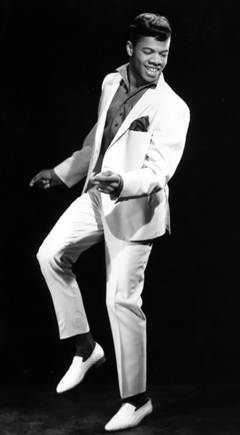 The song sold over a million copies and went up to #4 on the
R&B charts and #6 on the U.S. Pops charts. Like “Hey Leroy” this song
contained Jimmy Castor idioms like "What
we're gonna do right here is go back...". An album followed titled “It's Just Begun”, which contained
favorites “It's Just Begun”, “Psyche”, “L. T. D. (Life, Truth & Death)”, “Bad”, a re-recording of “I
Promise To Remember” as well as others. His success at RCA resulted with
the album “Phase Two” in 1972 which
gave the fans “Say Leroy (The Creature
From The Black Lagoon Is Your Father)”, “Luther The Anthropoid (Ape Man)”, “Party Life”, “The First Time
Ever I Saw Your Face”, “Tribute To
Jimi: Purple Haze / Foxey Lady” and other great tunes. His last album with
RCA was “Dimension III” released in
1973. On this outing Jimmy recorded some beautiful saxophone ballads like “Bridge Over Troubled Water”, “Soul Serenade” and “Whiter Shade Of Pale”. He began to call himself the E-Man or the Everything Man, because he boosted that he played everything from the
saxophone to the timbales. It began to stick. He became dissatisfied with RCA
Records and soon parted ways with them. In 1974 he would start a new
relationship with Atlantic Records and the hits would follow. Now billed as The Jimmy Castor Bunch Featuring the Everything
Man, they quickly turned out two albums that year. The first of which was
titled “Jimmy Castor (The Everything Man)
And The Jimmy Castor Bunch” which contained mostly beautiful ballads like Didn't I Blow Your Mind This Time, Love's
Theme and For All We Know. The
single and hit was Maggie, which was a
slow funky ballad and a cover of the group Redbone.
Larger success came to Jimmy with the second album that year called Butt Of Course... which contained hits “E-Man Boogie”, “Bertha Butt Boogie” and “Potential”.
The Jimmy Castor characters and his humorous idioms were present plus “Bertha Butt Boogie” was sort a sequel to “Troglodyte (Cave Man)”. This became one of his
biggest hits and another signature piece. The following year gave the fans the Supersound album which resulted in two
hits; Supersound and King Kong. His formula of The song sold over a million copies and went up to #4 on the
R&B charts and #6 on the U.S. Pops charts. Like “Hey Leroy” this song
contained Jimmy Castor idioms like "What
we're gonna do right here is go back...". An album followed titled “It's Just Begun”, which contained
favorites “It's Just Begun”, “Psyche”, “L. T. D. (Life, Truth & Death)”, “Bad”, a re-recording of “I
Promise To Remember” as well as others. His success at RCA resulted with
the album “Phase Two” in 1972 which
gave the fans “Say Leroy (The Creature
From The Black Lagoon Is Your Father)”, “Luther The Anthropoid (Ape Man)”, “Party Life”, “The First Time
Ever I Saw Your Face”, “Tribute To
Jimi: Purple Haze / Foxey Lady” and other great tunes. His last album with
RCA was “Dimension III” released in
1973. On this outing Jimmy recorded some beautiful saxophone ballads like “Bridge Over Troubled Water”, “Soul Serenade” and “Whiter Shade Of Pale”. He began to call himself the E-Man or the Everything Man, because he boosted that he played everything from the
saxophone to the timbales. It began to stick. He became dissatisfied with RCA
Records and soon parted ways with them. In 1974 he would start a new
relationship with Atlantic Records and the hits would follow. Now billed as The Jimmy Castor Bunch Featuring the Everything
Man, they quickly turned out two albums that year. The first of which was
titled “Jimmy Castor (The Everything Man)
And The Jimmy Castor Bunch” which contained mostly beautiful ballads like Didn't I Blow Your Mind This Time, Love's
Theme and For All We Know. The
single and hit was Maggie, which was a
slow funky ballad and a cover of the group Redbone.
Larger success came to Jimmy with the second album that year called Butt Of Course... which contained hits “E-Man Boogie”, “Bertha Butt Boogie” and “Potential”.
The Jimmy Castor characters and his humorous idioms were present plus “Bertha Butt Boogie” was sort a sequel to “Troglodyte (Cave Man)”. This became one of his
biggest hits and another signature piece. The following year gave the fans the Supersound album which resulted in two
hits; Supersound and King Kong. His formula of 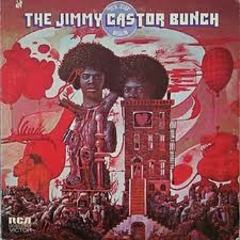 comic book
characters, science fiction and Hollywood monster themes continued to work for
him. Similar types of things were working for Parliament-Funkadelic and Earth
Wind & Fire with bigger than life and fantasy themes. The E-Man Groovin' album was released in
1976, and its hit was “Space Age”
which did well on the R&B charts. The Maximum
Stimulation album was released in 1977 with the title track as the single. From
this point on, his position on the charts began to fall and he was not able to
recover. comic book
characters, science fiction and Hollywood monster themes continued to work for
him. Similar types of things were working for Parliament-Funkadelic and Earth
Wind & Fire with bigger than life and fantasy themes. The E-Man Groovin' album was released in
1976, and its hit was “Space Age”
which did well on the R&B charts. The Maximum
Stimulation album was released in 1977 with the title track as the single. From
this point on, his position on the charts began to fall and he was not able to
recover.
Jimmy Castor was one of my first
interviews on the Funk Show. I
remember being a little nervous after he agreed to do the interview. I was one
of his biggest fans, I had seen his act about three times and I knew how
important he was to the Funk. I
decided that I would just stick to his musical history and discuss it with
him in chronological order. During the interview he talked about his early days
in Manhattan, free lancing as a sideman and recording as a solo artist. He kept
switching the conversation back to Frankie
Lymon and the Teenagers. I had not done any research on the group, so I
shifted our conversation back to The
Jimmy Castor Bunch and he would eventually switch it back to Frankie Lymon. We went back and forth a
few times and it did not take long for me to realize that he wanted to talk
about Frankie Lymon. So, I pushed
back my notes and I let him talk. I discovered that he loved Frankie Lymon and the Teenagers and
that they were the group that opened the doors for him. He wanted the public to
know who the real Frankie Lymon was.
The 1988 movie Why Do Fools Fall in Love
was based on the life of Frankie Lymon, and he said that it was a pack of lies.
He said that the movie depicted Frankie Lymon as a womanizer and a drug addict,
which he said was untrue. He had mentioned that he had wanted to do his own
movie on the real life of Frankie Lymon.
Jimmy Castor passed away on January
16, 2012 at the age of 71. The legacy of Jimmy
Castor is that he was an important chapter in the history of the Funk during the
1970’s. His music of “Troglodyte (Cave
Man)”, “It's Just Begun”, “King Kong”
and “Bertha Butt Boogie“ were all
important fabric of the 1970’s Funk. The only live recording of the Jimmy
Castor Bunch is captured on the RCA 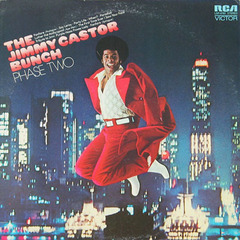 Records soundtrack to the 1973 concert “Keep The Dream Alive; Martin Luther King”.
He had told me that this album was a collector’s item. When I spoke with him
and whenever he would e-mail me, he would always say “Howard keep teaching. Keep teaching the importance of our music to the people and to the young
people”. I feel fortunate to have had conversation with Jimmy Castor and discuss
the history of R&B and the Funk. Jimmy Castor has been on my mind, because
I am working on a forthcoming book containing ten of my best interviews. The
first chapter will be on Jimmy Castor. He left a big impression on me. I will continue
to teach and I Remember the E-Man. Records soundtrack to the 1973 concert “Keep The Dream Alive; Martin Luther King”.
He had told me that this album was a collector’s item. When I spoke with him
and whenever he would e-mail me, he would always say “Howard keep teaching. Keep teaching the importance of our music to the people and to the young
people”. I feel fortunate to have had conversation with Jimmy Castor and discuss
the history of R&B and the Funk. Jimmy Castor has been on my mind, because
I am working on a forthcoming book containing ten of my best interviews. The
first chapter will be on Jimmy Castor. He left a big impression on me. I will continue
to teach and I Remember the E-Man. |
|
Last Updated on Wednesday, 21 November 2012 11:47 |
|
He Played Pretty for the People (The Story of Sil Austin) |
 |
 |
 |
|
Written by Administrator
|
|
Monday, 19 November 2012 13:46 |
He Played Pretty for the People (The Story of Sil Austin) 
In the late 1980’s I was offered a job assignment by my
employer in Atlanta, Georgia. I worked at a site called
IBM Riveredge and like most new jobs my days were stressful and at times the
end of the day was a relief. I quickly noticed a second shift security staff employee, who was very friendly and everyone in the building liked him. He would speak to me every day, and I soon found myself
engaging in conversation with him daily before I went to my car. Our
conversations would generally be centered on what we saw or heard on National Public
Radio or on CNN. It was mostly on political topics like the Gulf War and the
George H. W. Bush presidency. Occasionally; we would engage in conversation
about yard work and home maintenance, but never on music. A
day never went by without me stopping and speaking with my friend that I only
knew as Sil. A year had gone by and on April 3, 1990 I had heard on NPR that Sarah
Vaughan has passed away. That evening while walking to my car, I heard Sil call
to me and he said “Hey Howard .. did you heard that Sarah Vaughan passed today?”
I told him that I did hear about it and he said to me “She was a good lady”,
“She was a grand lady”. I then began to run down Sarah Vaughan’s history that I
knew and he acknowledged it and said that he knew her. It startled me and I
said “You knew Sarah Vaughan?” he said “Yes, I worked for her?” I said “You
worked for Sarah Vaughan?
Wow!” I then asked him what he did for her and was he her chauffeur. He told me
no, that he played saxophone for her. I then said “You played saxophone for
Sarah Vaughan?” Holy Cow! I said “I did not know that you were a musician?” 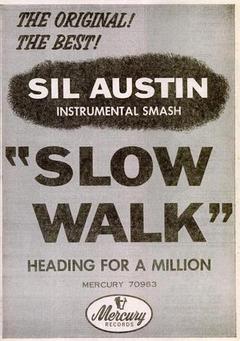 and
he said to me “You never asked!”. He then began to tell me his history that he
had recorded over 30 albums and that he recorded for Mercury Records, and SSS
Records. I went home that evening and looked Sil Austin up in my Soul Music,
Jazz and Rhythm and Blues books that I had at home (this was pre internet) and
there he was. After that Sil began to tell me about his musical history of
working for and with Roy Eldridge,
Cootie Williams, Tiny Bradshaw, Red Prysock, Hank Ballard, Maxine Sullivan, Chuck Berry, Jerry
Butler and others. I began to tell everyone at IBM who Sil Austin was and soon he was our celebrity. and
he said to me “You never asked!”. He then began to tell me his history that he
had recorded over 30 albums and that he recorded for Mercury Records, and SSS
Records. I went home that evening and looked Sil Austin up in my Soul Music,
Jazz and Rhythm and Blues books that I had at home (this was pre internet) and
there he was. After that Sil began to tell me about his musical history of
working for and with Roy Eldridge,
Cootie Williams, Tiny Bradshaw, Red Prysock, Hank Ballard, Maxine Sullivan, Chuck Berry, Jerry
Butler and others. I began to tell everyone at IBM who Sil Austin was and soon he was our celebrity.
Sylvester Austin
was born on September 29, 1929 in Florida
and he had told me that at a very young age he joined the circus and traveled
with them playing in the band. He soon moved to New York and signed with Mercury Records as
a recording artist. One of his first recording dates occurred on January 15,
1957. That day he recorded the tracks Cat
Walk, The Hungry Eye, The Indians Are Coming and Crazy Rhythm. He recorded heavily in 1957 resulting in seven
recording sessions which created two albums Slow
Walk Rock, and Everything's Shakin'.
His first release was actually in 1956 called Slow Walk. It became a top 20 Pop hit. His version of Danny Boy became his second hit in 1957
and was his signature song. He soon would release other albums; Soft Plaintive and Moody and Sil Austin Plays Pretty for the People
in 1961. The latter became the album that he was most remembered for. The album
cover was photographed in New York’s Central Park and the Ray
Charles Singers were hired to sing the background chorus on the album. Sil Austin Plays Pretty for the People is
a classic and as Sil once told me, “this is my masterpiece”. Also, that year the album Golden Saxophone Hits was released. In 1963 The Sil Austin With the Merry Melody
Singers album was released called Sil Austin With Strings And Choir Plays
Folk Songs. His last notable album on Mercury records would be called Plays Pretty Melodies of the World 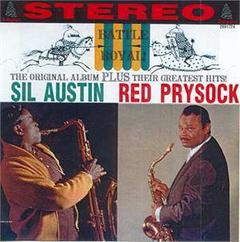 in 1964.
In the later 1960’s, he would switch to SSS Records and some of his more notable
albums were Honey Sax in 1969, Songs of Gold and Sil & The Silver Screen. One
highlight in Sil Austin’s career was the album Sil Austin vs. Red Prysock Battle Royal! in 1959. This is a timeless
classic and Sil was very proud of this recording session which included Sil
Austin, Red Prysock (ts) Dave Martin (p) Everett Barksdale, Kenny Burrell (g)
Milt Hinton (b) David "Panama"
Francis (d). During the time that I had met
Sil, he had recorded a very nice CD called Go
Girl! with Sil Austin, Grady
"Fats" Jackson, and Mark
"Kaz" Kazanoff. "Fats" was a former saxophonist with the Big Joe Turner band. They called themselves the Tri-Sax-Ual Soul Champs. Sil did not own any of his albums when I
met him. I was helping him to build back his collection of his material. After
moving to North Carolina
in the 1990’s, I had mailed Sil a couple of his albums which I had recently found. I
soon received a phone call from his wife the Rev. Vernice Austin, that Sil had passed away on September 1, 2001.
It was a sad day for me that I had lost my friend who had shared so many
stories about his life in the music business. On how he had experienced hard
times and bad business from record companies and management who did not pay him
and ripped him off and good times on how he had helped his younger brother go
to college with the money that he had earned in the business. Sil Austin was a modest
man and he hardly spoke about his music career unless asked. He was a in 1964.
In the later 1960’s, he would switch to SSS Records and some of his more notable
albums were Honey Sax in 1969, Songs of Gold and Sil & The Silver Screen. One
highlight in Sil Austin’s career was the album Sil Austin vs. Red Prysock Battle Royal! in 1959. This is a timeless
classic and Sil was very proud of this recording session which included Sil
Austin, Red Prysock (ts) Dave Martin (p) Everett Barksdale, Kenny Burrell (g)
Milt Hinton (b) David "Panama"
Francis (d). During the time that I had met
Sil, he had recorded a very nice CD called Go
Girl! with Sil Austin, Grady
"Fats" Jackson, and Mark
"Kaz" Kazanoff. "Fats" was a former saxophonist with the Big Joe Turner band. They called themselves the Tri-Sax-Ual Soul Champs. Sil did not own any of his albums when I
met him. I was helping him to build back his collection of his material. After
moving to North Carolina
in the 1990’s, I had mailed Sil a couple of his albums which I had recently found. I
soon received a phone call from his wife the Rev. Vernice Austin, that Sil had passed away on September 1, 2001.
It was a sad day for me that I had lost my friend who had shared so many
stories about his life in the music business. On how he had experienced hard
times and bad business from record companies and management who did not pay him
and ripped him off and good times on how he had helped his younger brother go
to college with the money that he had earned in the business. Sil Austin was a modest
man and he hardly spoke about his music career unless asked. He was a
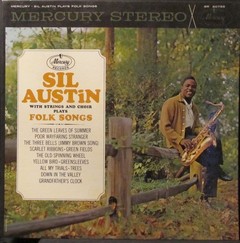 saxophonist, a songwriter, a band leader, a recording artist and a business
man. saxophonist, a songwriter, a band leader, a recording artist and a business
man.
Unfortunately, for me Sil passed away before I got into
radio and an interview about his life on THE FUNK SHOW would have been perfect.
The title of his 1961 album says it all about his life: Sil Austin Plays Pretty for the People. |
|
Last Updated on Monday, 07 January 2013 11:07 |
|
|





